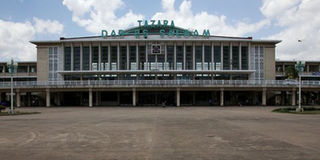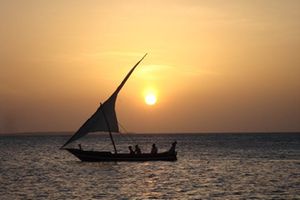Tread carefully in the plan to revamp Tazara

What you need to know:
- The plan has come at the right time when the need to overhaul Tanzania’s land, water and air transport infrastructure—to spur the growth of the manufacturing sector—has become a key agenda.
The essence of the plan to revamp the operations of Tanzania Zambia Railways Authority (Tazara) cannot be overemphasised. The plan has come at the right time when the need to overhaul Tanzania’s land, water and air transport infrastructure—to spur the growth of the manufacturing sector—has become a key agenda.
Besides, with a design capacity of carrying three million passengers and five million tonnes of cargo per year, while it ferries only 450,000 people and 1.3 million tonnes each year, the need to find a lasting solution to the railway’s woes is obvious.
The $250 million (about Sh545 billion) required to rehabilitate the railway line and the essential equipment is too much for Tanzania’s economy which is presently contending with a serious deficit in financing infrastructure development.
However, Tanzania and Zambia must tread carefully in their endeavour to rope in private sector investors. Experience shows that private players have never been good partners in the area of revamping huge infrastructure projects in this country.
Obviously, memories are still fresh with regard to how the marriage between Tanzania Railways Limited and RITES of India collapsed abruptly in 2011, with the government noting that the Indian firm hadn’t invested to the level it had pledged.
Similarly, following directives from the Bretton Woods Institutions as part of the implementation of the country’s Structural Adjustment Programme, Air Tanzania partnered with South African Airways in 2002.
The partnership ended after four years—with an accumulation of a $19 million loss. In each case, the government had to incur costs associated with repossessing investors’ shares.
Against such a background, it is important for Tanzania and Zambia to carefully select the right investors to partner with in their bid to revive Tazara. Those they pick must prove they have the money required to fine-tune the two-country infrastructural outfit’s operations.
LET’S CURB WATER POLLUTION
Discharging untreated household and industrial wastes directly into water sources causes not only pollution, but also endangers marine life. We also have oil spills and illegal fishing that destroy aquatic ecosystems.
The government has announced procedures to be observed by maritime service providers that are meant to mitigate pollution in the Indian Ocean and inland water bodies.
Opening the World Maritime Week on Tuesday, the minister for Works, Transport and Communications, Prof Makame Mbarawa, said the government had put in place a national maritime oil spill contingency and response plan to vessel traffic in the Indian Ocean and inland lakes. But this is long overdue. We must have a sustainable system of protecting our environment and water sources because these are crucial to our own existence.
All this calls for the environment-friendly maritime traffic. This is due to the fact that 90 per cent of the cargo is shipped and the volume of ocean traffic from Tanzania is going to increase, thanks to the envisioned $2.5-billion Uganda-Tanzania crude oil pipeline project.
This means without having effective measures to control pollution, our water sources won’t be safe for both humans and aquatic species. It means we have the obligation to make our environment and water sources safer.




